When it accepted a $200 million donation from Charlie Munger, the nonagenarian billionaire vice chairman of Berkshire Hathaway, the University of California, Santa Barbara, knew that strings were attached. Part of the agreement was that Munger’s donation would be used to partly fund student housing—something the university needs. A more unconventional part of the agreement was that the new student housing be designed by Munger, who is not a licensed architect, and that his vision be built exactly as he demanded.
Munger’s design is questionable. A 1.7-million-square-foot, 11-story building designed to house 4,500 people, it is a megastructure of clustered bedroom units that are missing a key element: windows. The Santa Barbara Independent published an article last week about the design and how its seemingly unstoppable path to construction spurred the resignation of a consulting architect from the university’s design review committee.
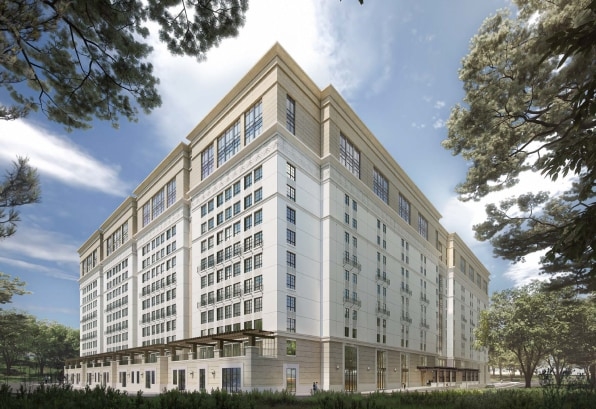
The project raises questions about what constitutes humane student housing at a time when, crunched by the pandemic, universities are struggling with deficits related to campus closures and students not returning to class. Housing is a major source of revenue for universities, according to Paul J. Wuennenberg, a principal at KWK Architects in St. Louis, which specializes in design for higher education. Though the pandemic has caused a dip, enrollment at universities is now on the rise. Many universities rely on developing their own buildings to provide a steady source of housing in what can be expensive housing markets. Oceanfront Santa Barbara and the neighboring city of Goleta, where the campus is located, is one such expensive market.
Munger’s design offers a solution to a growing demand for housing and revenue, but the lack of windows strikes many as a serious design flaw. “As a human being you want to have contact with daylight and be able to see the times of day, to have fresh air,” Wuennenberg says.
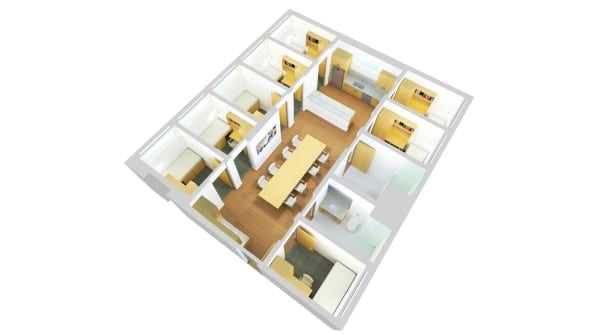
The project has elicited many bewildered responses blasting its lack of windows. Floor plans for the project show a superblock of residential clusters, each with eight private bedrooms, two bathrooms, a combined kitchen and dining area, and zero windows. Instead of natural light, each room would be equipped with a dimmable fixture that replicates the glow of the sun.
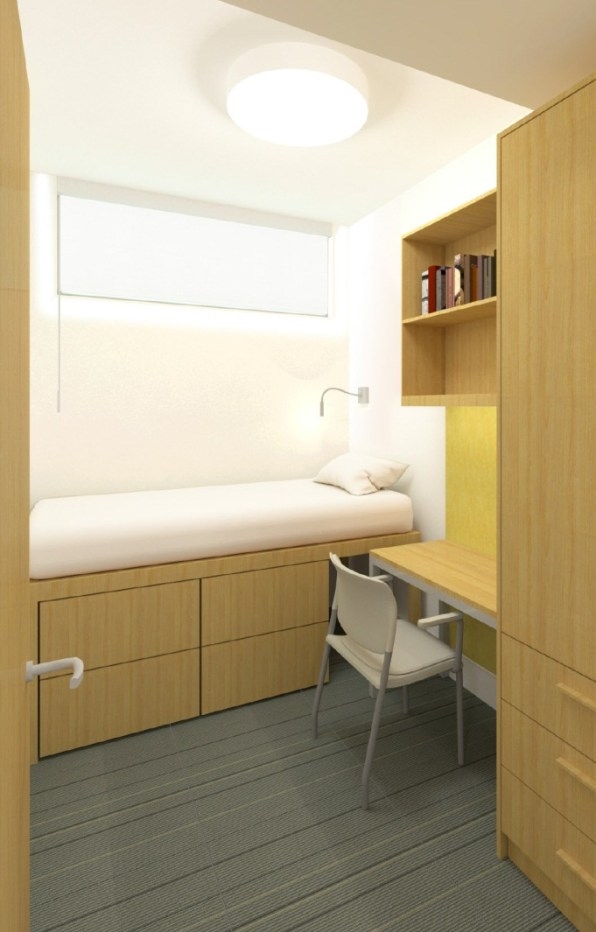
At a UC Board of Regents meeting in 2016 Munger himself called the window-free student living quarters the project’s “one huge catch.” Explaining that this lighting design was inspired by the lighting used in the windowless cabins of Disney cruise ships, Munger argued that the lack of windows would be part of the building’s overall efficiency.
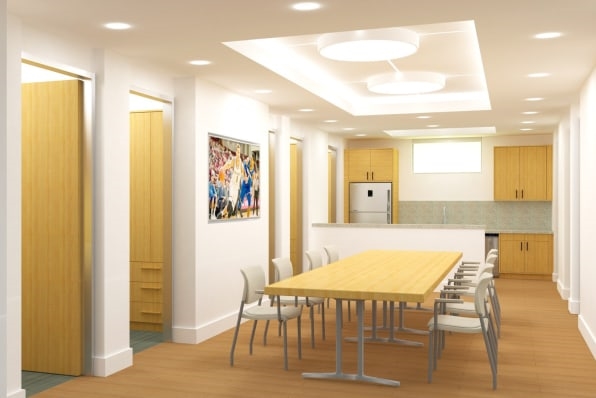
“I’m not a bit surprised that someone looked at it and said, ‘What the hell is going on here?’ ” Munger recently told The New York Times of the design. “What’s going on here is that it’s going to work better than any other practical alternative.” With two other university residences built to his design specifications, one at Stanford and another at the University of Michigan, Munger’s design ideas may be making headway in the architecture of higher education.
Munger’s proposal is aiming to solve a specific problem at UC Santa Barbara, and one many universities deal with: outdated and insufficient student housing. His proposed 4,500-resident megadorm would release pressure on the local housing market while also capturing additional housing revenue for the university, which has an average of 25,000 undergraduate and graduate students per academic year. According to environmental impact documents, the project would be energy efficient, and designed for fast, off-site prefabrication. It could be ready for occupation by 2025, providing almost all the estimated 5,000 additional beds the university’s long-range development plan anticipates it needing.
But according to designers and developers specializing in student housing, the design of dormitories is only partly about ticking technocratic boxes in long-range plans. Student housing also needs to provide a home for students—the young, sentient beings who are the bread and butter of the university system.
Designers like Wuennenberg of KWK Architects say student housing design today has to balance energy efficiency with the wellness of the students living there. “From a sustainability standpoint, daylighting space and not having it reliant on electricity is certainly a good thing and I would argue better for you, your psychology, and the circadian rhythm of your body.” Office designers are also recognizing these benefits, with newly designed buildings trading sealed-up facades for windows that workers can actually open.
KWK Architects recently designed a residence hall for the University of Colorado Boulder, a 700-bed project that achieved the LEED green building certification’s highest level partly by prioritizing natural light. Wuennenberg says simple design moves help achieve both environmental and social goals, like the placement of windows and seating areas on stairwell landings to bring in light and air while offering space for spontaneous social activity.
“It’s an example of the type of sticky spaces that we like to try to develop, where you can get students to interact,” Wuennenberg says. “Ultimately beyond just providing a bed, we’re trying to provide spaces where students meet one another, where they develop a culture within the residence hall that’s unique.”
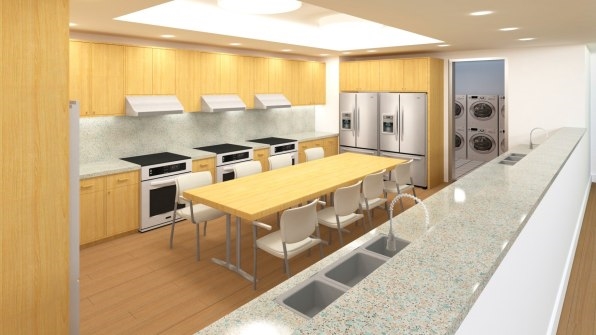
And as the spaces where college students end up spending the majority of their time, Wuennenberg says residence halls should also feel warm and homelike. “They need to be durable, they need to be something that staff can maintain, but at the same time you don’t want it to feel like a prison,” he says.
Some dorms do end up feeling that way, though. Ofer Ohad is a managing partner at the New York-based development management company DBI Projects, and he says student housing has historically traded size for efficiency. “You have small shared rooms and a bathroom at the end of the corridor and the absolute minimum size possible,” he says. For a recent student housing project for Bard College’s Berlin location, DBI workied with New York architects Civilian to try to reverse that trend. The design features apartment-style rooms, with large windows, tall ceilings, and spacious living quarters—all features that serve as selling points to persuade students to choose campus housing instead of entering the broader rental market. “We’re trying to be respectful and mindful that the students who live there need to be treated as adults,” Ohad says.
Windows, it turns out, are what both students and the universities housing them want from dorm buildings. LS3P is an architecture firm with offices throughout the South and it designs new residence halls and renovates outdated facilities for colleges and universities. In each type of project, access to natural light and air is a priority, according to Shawn Sowers, the firm’s higher education practice leader. “We’ve seen a dramatic shift of awareness to wellness and self-care,” she says.
That guided the firm’s design for a new residential building at the University of North Carolina School of the Arts, a 450-bed residence where every bedroom has an 8-foot-tall, floor-to-ceiling window. “Students are expecting that now,” says Krissy Ferguson, an associate principal at LS3P. For universities, student housing is in competition with off-campus housing. Attractive dorms that convince students to live on campus are ultimately a revenue source.
As universities renovate older dorm buildings, these investments become more important. Energy efficiency and better light are primary requirements. “That’s always an asset,” Ferguson says. “On every renovation project I’ve ever worked on, it’s always bringing in larger windows.”
At UC Santa Barbara, windows seem unlikely to get the same priority. For now, development of Munger’s proposed building is moving forward.
(54)